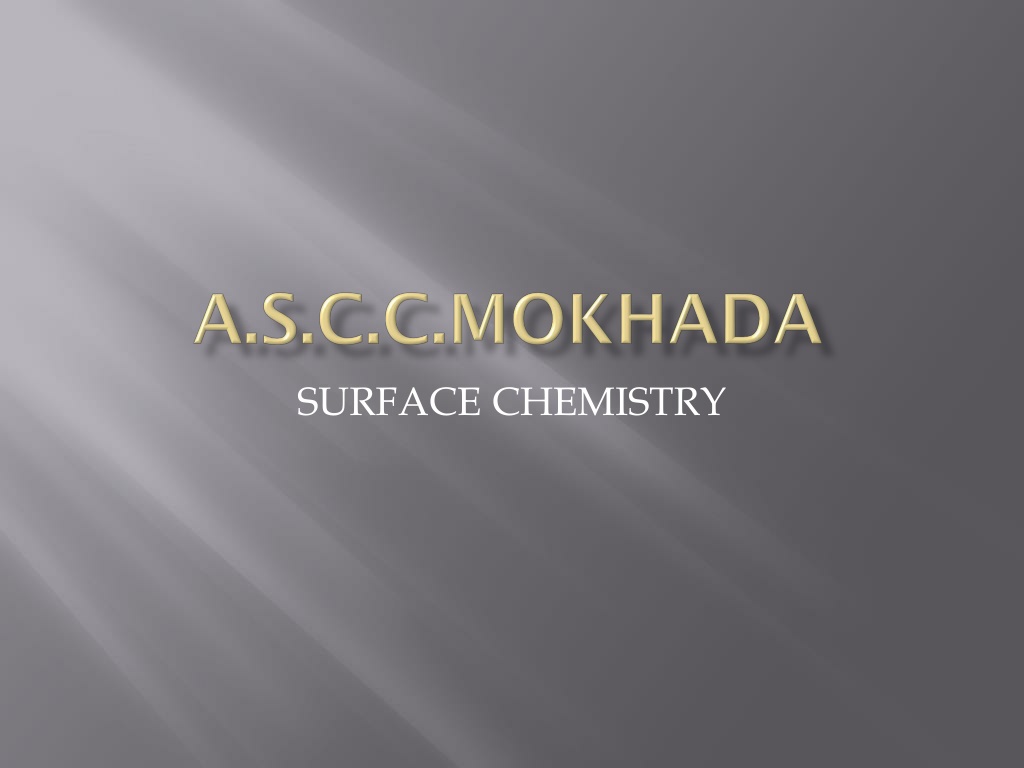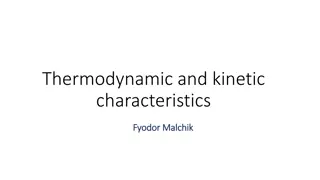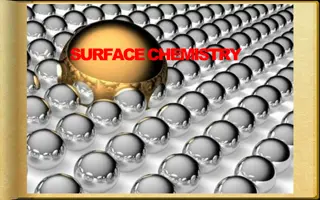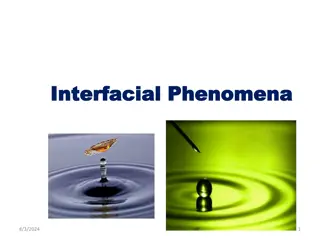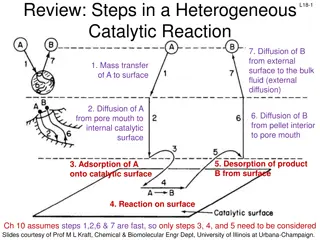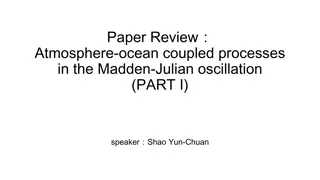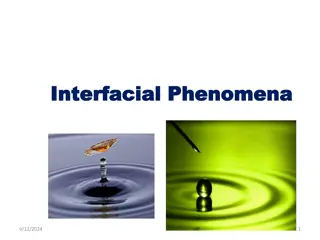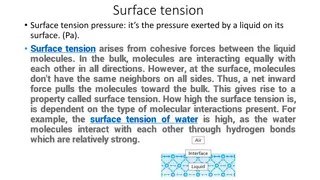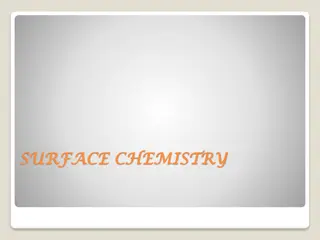Understanding Surface Chemistry and Adsorption Phenomena
Surface chemistry is a crucial branch of chemistry that focuses on the chemical processes occurring at interfaces between different surfaces like solid-liquid, solid-gas, and liquid-gas. This field plays a significant role in various industries, including electronics. Adsorption, absorption, and sorption are key processes studied in surface chemistry, each with distinct characteristics and applications. Understanding the nature of adsorbents, gases, pressure, and surface area is essential for comprehending adsorption phenomena. Chemical and physical adsorption processes, as well as factors influencing gas adsorption, are also explored in this field.
Download Presentation

Please find below an Image/Link to download the presentation.
The content on the website is provided AS IS for your information and personal use only. It may not be sold, licensed, or shared on other websites without obtaining consent from the author. Download presentation by click this link. If you encounter any issues during the download, it is possible that the publisher has removed the file from their server.
E N D
Presentation Transcript
Surface chemistry is the branch of chemistry which deals with the study of the chemical phenomena that occurs at the interface of two surfaces which can be solid-liquid,solid- gas,liquid-gas,etc. Surface chemistry has major role in various processes such as enzymatic reactions.In the electronic industry they are used in the surface and interface of microchips found in computers.
Adsorption is the chemical process in which deposition of one layer takes place over other layer. In other words desorption is the reverse process of adsorption. Absorption is the process in which the molecules or particles get absorbed in the bulk in other substance. Sorption : When the process of adsorption and absorption takes place simultaneously is known as sorption. Adsorbet:The substance wchich is going to adsorbed(solute). Adsorbent: The surface where the adsorption will takes place(solvent).
CHEMICAL ADSORPTION PHYSICAL ADSORPTON There is presence of weak wonder walls force. It is also known as physisorption. Reversible in nature Formation of multilayer Rate of adsorption is directly proportional to the temperature.(tem increases adsorption increases). There is presnce of chemical bonding. It is also known as chemisorption. Not eversible in nature Formation of monolayer At high and low temperature the adsorption is normal but at mid temperature it is high.
Nature of adsorbent The adsorption of the gas depends on the nature of the adsorbent. A gas can be adsorbed on different absorbent surfaces in different amounts. For example, Hydrogen is weakly adsorbed on the alumina surface whereas it is strongly adsorbed on the nickel surface under certain conditions. Surface area When we increase the surface area of the adsorbent there is an increase in the adsorption of gases. This is because when we increase the surface area there is more number of adsorbing sites. So finely divided solids and some porous substances are good adsorbents
Nature of the gas In general, if a gas is more liquefiable it will be more easily absorbed. Pressure On the solid surface, there is a fixed number of adsorption sites where gas molecules can be adsorbed. Initially when the pressure has increased the rate of adsorption increases due to an increase in the gas molecules striking on the surface.
An adsorption isotherm is a graph that represents the variation in the amount of adsorbate(x) adsorbed on the surface of the adsorbent with the change in pressure at a constant temperature. Different adsorption isotherms have been proposed by different scientists namely, Langmuir isotherm Freundlich isotherm BET theory
Freundlich adsorption gives the variation in the quantity of gas adsorbed by a unit mass of solid adsorbent with the change in pressure of the system for a given temperature. The expression for the Freundlich isotherm can be represented by the following equation: where n>1 Where x is the mass of the gas adsorbed, m is the mass of the adsorbent, P is the pressure and n is a constant which depends upon the nature of the adsorbent and the gas at a given temperature. Taking the logarithm on both the sides of the equation, we get the above equation. The plot of this equation is a straight line as represented by the following curve.
The Freundlich adsorption isotherm is followed by another two isotherms, Langmuir adsorption isotherms and BET theory. The Langmuir adsorption isotherms predict linear adsorption at low adsorption densities and a maximum surface coverage at higher solute metal concentrations. The Langmuir adsorption isotherm has the form: =Kp/1+Kp Where is the fraction of the surface covered by the adsorbed molecule. K is an equilibrium constant known as the adsorption coefficient. { K= ka/kd = rate constant for adsorption/ rate constant for desorption} p is the pressure.
The theory of multilayer adsorption proposed by Brunauer, Emmett and Teller in 1938 (BET Theory) assumes that physisorption results in the formation of multilayer adsorption. After the formation of the monolayer, the adsorption process can continue with the formation of the multilayer involving the second layer, third layer and so on. The equation for BET is
Gas masks: Poisonous gases get adsorbed at the surface of the mask and prevent its encounter when used by coal miners. Production of vacuum: Traces of air are adsorbed on charcoal and removed from devices undergoing the process of evacuation. emoval of moisture: Silica gel pellets are used for the adsorption of moisture in medicines and new plastic bottles in order to control humidity. Removal of colour: The juice extracted from cane is treated with animal charcoal for the removal of the colouring agent in order to get a clear liquid solution. As Catalysts: Suitable materials are used as a catalyst such that reactants get adhered to its surface, thus enabling the reaction to proceed at a faster rate and increasing the rate of reaction. THE END
